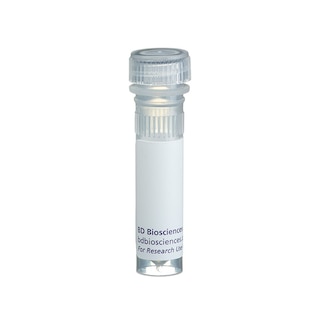-
抗体試薬
- フローサイトメトリー用試薬
-
ウェスタンブロッティング抗体試薬
- イムノアッセイ試薬
-
シングルセル試薬
- BD® AbSeq Assay
- BD Rhapsody™ Accessory Kits
- BD® OMICS-One Immune Profiler Protein Panel
- BD® Single-Cell Multiplexing Kit
- BD Rhapsody™ TCR/BCR Next Multiomic Assays
- BD Rhapsody™ Targeted mRNA Kits
- BD Rhapsody™ Whole Transcriptome Analysis (WTA) Amplification Kit
- BD® OMICS-Guard Sample Preservation Buffer
- BD Rhapsody™ ATAC-Seq Assays
- BD® OMICS-One Protein Panels
-
細胞機能評価のための試薬
-
顕微鏡・イメージング用試薬
-
細胞調製・分離試薬
-
- BD® AbSeq Assay
- BD Rhapsody™ Accessory Kits
- BD® OMICS-One Immune Profiler Protein Panel
- BD® Single-Cell Multiplexing Kit
- BD Rhapsody™ TCR/BCR Next Multiomic Assays
- BD Rhapsody™ Targeted mRNA Kits
- BD Rhapsody™ Whole Transcriptome Analysis (WTA) Amplification Kit
- BD® OMICS-Guard Sample Preservation Buffer
- BD Rhapsody™ ATAC-Seq Assays
- BD® OMICS-One Protein Panels
- Japan (Japanese)
-
Change country/language
Old Browser
Looks like you're visiting us from United States.
Would you like to stay on the current country site or be switched to your country?
BD Pharmingen™ FITC Hamster Anti-Mouse CD95
クローン Jo2 (RUO)

.png)

Expression of Fas antigen on mouse thymocytes analyzed by flow cytometry. Thymocytes from a BALB/c mouse were incubated with either FITC Hamster anti-Mouse CD95 (filled histogram) or left unstained (open histogram).
.png)

ImageTitle~BD Pharmingen™ FITC Hamster Anti-Mouse CD95
.png)
Regulatory Statusの凡例
Any use of products other than the permitted use without the express written authorization of Becton, Dickinson and Company is strictly prohibited.
Preparation and Storage
推奨アッセイ手順
The NA/LE format (No Azide/Low Endotoxin, Cat. No. 554254) of Jo2 should be used for both in vitro and in vivo apoptosis assays. The other formats contain azide and have not been specifically prepared with low endotoxin levels. The presence of sodium azide and/or endotoxin in other formats may affect the results of functioal assays, both in vitro and in vivo.
Product Notices
- Since applications vary, each investigator should titrate the reagent to obtain optimal results.
- Please refer to www.bdbiosciences.com/us/s/resources for technical protocols.
- Caution: Sodium azide yields highly toxic hydrazoic acid under acidic conditions. Dilute azide compounds in running water before discarding to avoid accumulation of potentially explosive deposits in plumbing.
- Although hamster immunoglobulin isotypes have not been well defined, BD Biosciences Pharmingen has grouped Armenian and Syrian hamster IgG monoclonal antibodies according to their reactivity with a panel of mouse anti-hamster IgG mAbs. A table of the hamster IgG groups, Reactivity of Mouse Anti-Hamster Ig mAbs, may be viewed at http://www.bdbiosciences.com/documents/hamster_chart_11x17.pdf.
- For fluorochrome spectra and suitable instrument settings, please refer to our Multicolor Flow Cytometry web page at www.bdbiosciences.com/colors.
- An isotype control should be used at the same concentration as the antibody of interest.
Fas antigen, CD95, is a 45 kDa cell-surface protein which can mediate apoptosis. It belongs to the TNF (tumor necrosis factor)/NGF receptor family. Expression of Fas has been described in the thymus, liver, heart, lung and ovary. Fas plays an important role in the apoptotic process that takes place during development. Monoclonal antibodies recognizing Fas such as Jo2 have cytolytic activity on cells expressing Fas. The cell death stimulated by Fas antibodies is characteristic of apoptosis and suggests that the lethal effects are a result of interaction of antibody with a functional Fas antigen as opposed to complement-mediated lysis.
The Jo2 antibody recognizes mouse Fas. The Jo2 antibody shows cytolytic activity against cell lines expressing mouse Fas by inducing apoptosis. Intraperitoneal injections of Jo2 mAb have been shown to kill mice and induce apoptotic hepatocyte death. Jo2 mAb has been reported to immunoprecipitate mouse Fas as a 45 kDa band from W4 cells. W4 cells are WR19L mouse lymphoma cells transformed with mouse Fas. The difference between the observed MW of Fas and that deduced from its amino acid sequence (Mr 34,971) may be due to glycosylation.

Development References (5)
-
Hiromatsu K, Aoki Y, Makino M, et al. Increased Fas antigen expression in murine retrovirus-induced immunodeficiency syndrome, MAIDS. Eur J Immunol. 1994; 24(10):2446-2451. (Clone-specific: Cytotoxicity, Flow cytometry, Functional assay). View Reference
-
Kagi D, Vignaux F, Ledermann B, et al. Fas and perforin pathways as major mechanisms of T cell-mediated cytotoxicity. Science. 1994; 265(5171):528-530. (Clone-specific: Flow cytometry, Functional assay). View Reference
-
Ogasawara J, Suda T, Nagata S. Selective apoptosis of CD4+CD8+ thymocytes by the anti-Fas antibody. J Exp Med. 1995; 181(2):485-491. (Clone-specific: Flow cytometry, Functional assay). View Reference
-
Ogasawara J, Watanabe-Fukunaga R, Adachi M, et al. Lethal effect of the anti-Fas antibody in mice. Nature. 1993; 364(6440):806-809. (Immunogen: Flow cytometry, Immunoprecipitation). View Reference
-
Yang Y, Mercep M, Ware CF, Ashwell JD. Fas and activation-induced Fas ligand mediate apoptosis of T cell hybridomas: inhibition of Fas ligand expression by retinoic acid and glucocorticoids. J Exp Med. 1995; 181(5):1673-1682. (Clone-specific: Flow cytometry). View Reference
Please refer to Support Documents for Quality Certificates
Global - Refer to manufacturer's instructions for use and related User Manuals and Technical data sheets before using this products as described
Comparisons, where applicable, are made against older BD Technology, manual methods or are general performance claims. Comparisons are not made against non-BD technologies, unless otherwise noted.
For Research Use Only. Not for use in diagnostic or therapeutic procedures.

